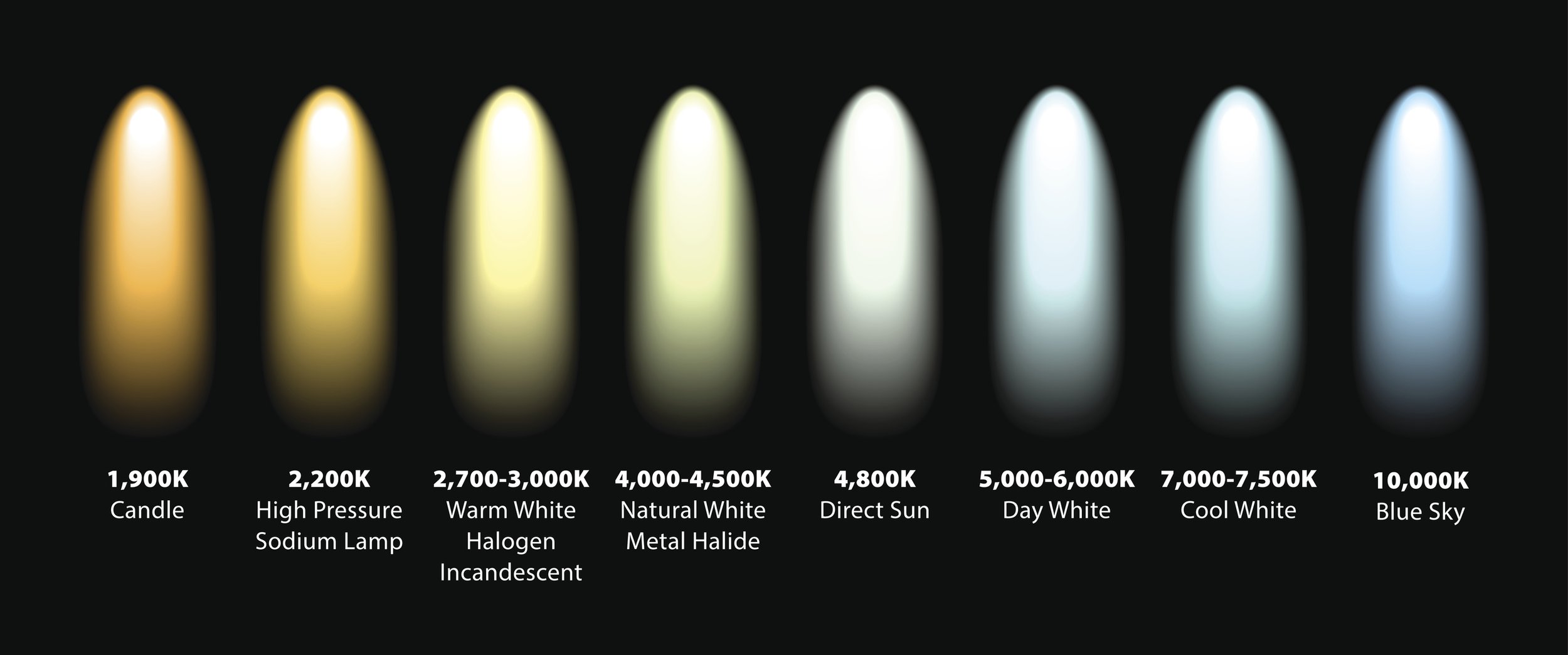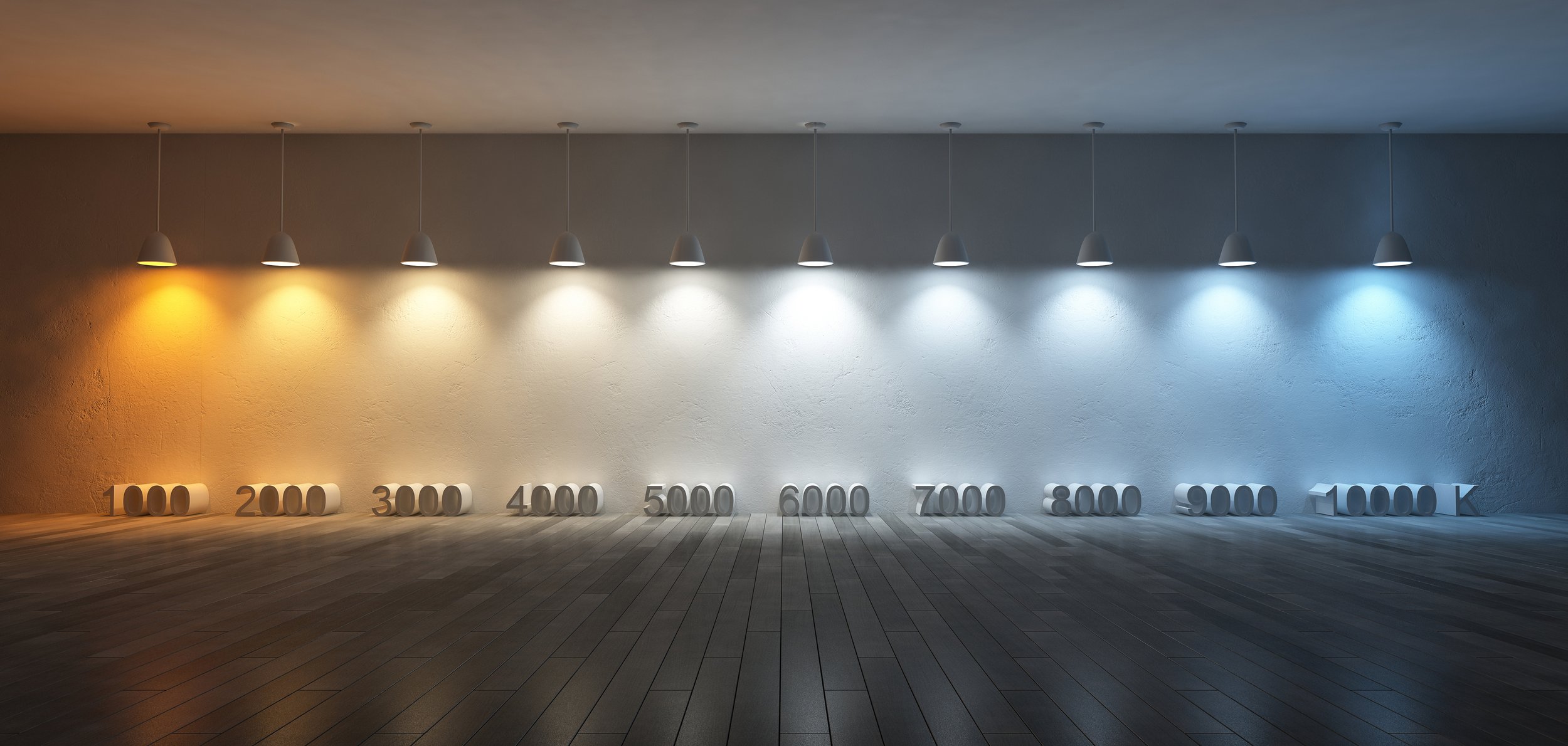Colour Temperature
Colour temperature describes a light source's warmth or coolness colour characteristic, this is important because we need different colour applications for different environments. For example, the 6500k daylight colour typically used for agricultural greenhouses would not be pleasant in a living room. Yet, the soft yellow glow of candlelight, which is towards the bottom of the scale at around 1900k, would be disastrous in an office environment. So fundamentally, if you don't get your colour temperature correct, you will not achieve the correct ambience.
You may be forgiven for thinking that the K means thousand, but it doesn't; it refers to degrees of Kelvin (K) on The Kelvin Colour Temperature Scale for Light Fixtures, which ranges from 1,000 to 10,000 and shows the colour appearance. The lower numbers on the scale are more yellow, and the higher numbers are more blue and stark in tone.
The majority of LEDs range from 2700k, 2800k, 3000k, 4000k or 5000k. With 2700-3000k being warm, 4000-5000k being cool.
We have all heard of 'warm white'; this is the colour usually applied to living spaces, restaurants and hotels. It's a softer, kinder light and is generally 2700k -3000k.
Neutral cool temperatures ranging from 3000k-4500k are generally best for productivity in office environments, while 4000-5000k is often applied in grocery stores and precision workshops as it better resembles natural daylight. Hospitals and stadiums will generally use around 5000k, which is far too stark for domestic or hospitality use.
You can also get tunable colour products; manufacturers have achieved this innovation by combining LEDs of different colour temperatures into single bulbs or strips. You often get dim to warm, which is a function applied to a light source so that white light gets progressively warmer in its colour temperature as it is dimmed. Without dim to warm technology, a 3000k lamp will remain at 3000k. The lumens will dim, but it will replicate the halogen and stay at the same colour temperature.
You can also have tunable white, which offers both warm and bright options, and these have two sets of controllable phosphor-coated (PC) LEDs: one with a warm-white colour of around 2700k and the second with a cool-white colour around 5000k.
Or lastly, full colour tunable usually has three or more different LED primaries that can be individually varied in output to create a mixture of light that is white, a tint of white, or a saturated hue. Tunable fittings allow you to create different effects from cool to warm.




